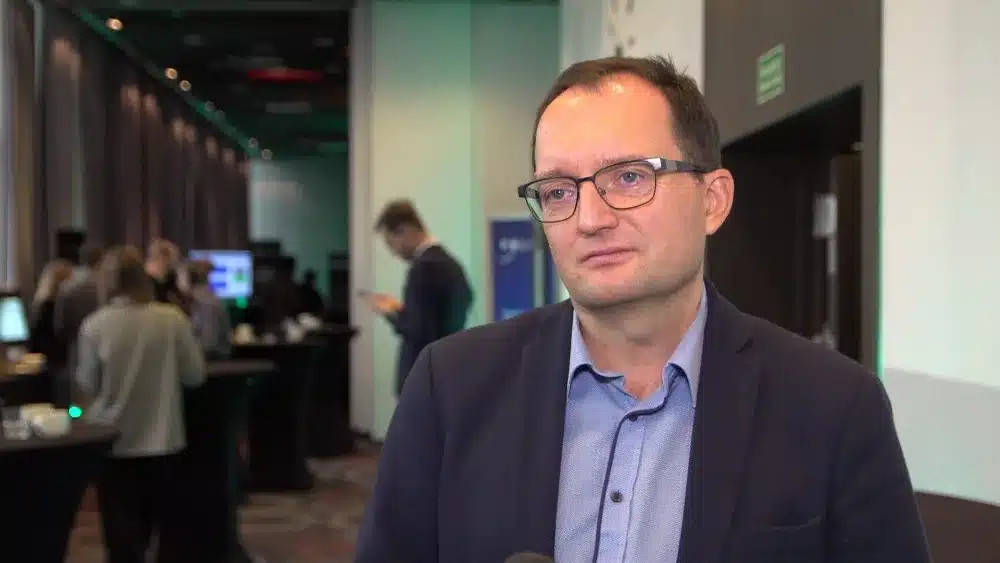According to the World Meteorological Organization, the number of natural disasters globally has increased fivefold in the past 50 years. At the same time, new opportunities in early warning and crisis management have helped to reduce the number of victims by three times. Satellite data is increasingly playing a crucial role in this regard, as demonstrated by the use of a new system, Poland’s Civil Security Hub, during a major flood in the southwest of the country in September.
“Civil Security Hub is an initiative that was born when the Ministry of Development decided to increase our contribution to the European Space Agency to efficiently implement space solutions for civil security. Search and rescue, crisis management; wherever we can help people, we want to apply the latest solutions, and satellite solutions can provide a wealth of information,” said Dr. Jakub Ryzenko, Head of the Crisis Information Center at the Space Research Center of the Polish Academy of Sciences.
Poland’s Civil Security Hub is a project of the European Space Agency. It is a system for delivering satellite information for crisis management, developed in collaboration with the Finnish company Iceye, creator of the world’s largest civilian constellation of radar satellites observing Earth. The Hub aims to coordinate the use of Earth observation data and implement solutions that integrate information from satellites and drones. Experts predict that this kind of data could soon become a constantly available source of information to support rescue operations and crisis management.
“Satellite observation, water monitoring, more precise localization, combining this information with drones, situational awareness, more effective decision-making, and more efficient rescue action – this is what we’re aiming for. We also want to focus efforts on risk assessment; the best disaster is the one that didn’t occur,” says Dr. Ryzenko.
Tests of the Civil Security Hub were originally planned for spring 2025, but due to the September floods, they were launched earlier in an experimental mode.
“Using satellite techniques during the flood is an example of successful support for rescue operations. We provided information to dozens of users in Warsaw and on the ground. They were aware of how the flood wave moved, which areas were flooded, and where to concentrate their efforts at any given time. This was, of course, just supplemental information, but it often significantly expanded what we got from spot reports,” points out the Head of Crisis Information Center.
Monitoring began at the onset of the flood on September 13, with the first analysis published the next day. Over two weeks, a total of 56 analyses were produced. To the State Fire Service, regional crisis management centers, hydrological services, and the Joint Forces Operational Command, 147 maps were delivered within less than an hour of production, enabling their use for operational purposes. The activities were carried out in cooperation with Iceye. During the flood, all radar satellites were directed to observe the crisis situation in southern Poland. The specialists at CIK CBK PAN also used satellite images from the Copernicus program (Sentinel-1, Sentinel-2) and Landsat 8/9.
Data provided not only allowed the assessment of which areas were flooded. Maps also advised how to drain the water, mapped specific buildings, and helped inform decisions about evacuating further areas. However, there could be many more applications. Data could be used for early warnings and enabling people to take action to mitigate the effects of disasters before they happen.
“We want to emphasize better situational awareness; field commanders better knowing what is happening, which places are at risk, in which order to evacuate, in which order to secure. More precise forecasting of threat development is also a chance for decisions to be more accurate. Training, preparation, use of forecasts, models, scenarios of threat development, to better train services,” notes Dr. Ryzenko.
This is crucial in the context of natural disasters, the number of which – according to the World Meteorological Organization – has increased fivefold in the last 50 years. At the same time, new possibilities in early warning and crisis management have already reduced the number of victims by three times.
“No type of threat is beyond our area of interest. We focus on three key issues that are the biggest problems: floods, forest fires, severe weather events, especially strong winds, but also landslides, dramatic changes in land subsidence,” says the head of CIK.
